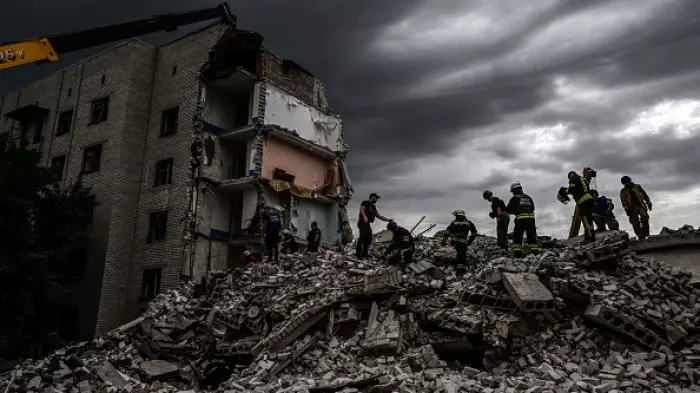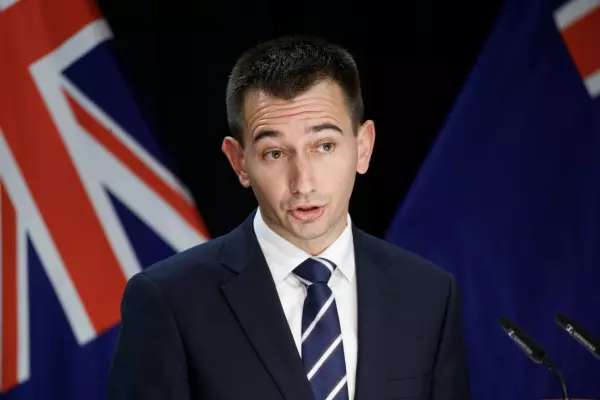Karl Marx wrote many famous sentences. One was: "History repeats itself, first as a tragedy, second as a farce."
He wrote this almost 170 years ago in the context of discussing the coup of 1851 that led to Louis Napoleon becoming a dictator in France.
When the mistake is repeated the first time, it is a tragedy, a sad reminder that it is not too late to learn and do better the next time. I was reminded of this when prompted by a recent report of a failed international recruitment campaign for nurses.
If Marx was around today (a tad problematic given that he would be approaching his 204th birthday), he would probably use the same expression to describe government responses to health workforce shortages.
These are now so extensive that they range between crisis and catastrophe.
We haven't had an impressive record in health workforce planning and development, even though for much of the past four decades it has overall been a central government responsibility.
It made good sense for this responsibility to be held at a national level because of the need for a ‘whole-of-system’ approach, especially in the context of international competitiveness and a country our size.
Workforce planning in inaction
I recall it was Dr George Salmond who energised the then department of health to play a greater role in workforce planning in the 1980s. This was linked to the move to area health boards, which later became district health boards.
Dr Salmond was a public health specialist who went on to be a respected director-general of health.
However, momentum was lost in the 1990s with a controversial attempt to use market forces to drive the public health system. Competition replaced co-operation.
Workforce planning was the opposite of this ideology. To even mention the words 'workforce planning' was to be accused of turning the health system into something like a Polish shipyard in Gdańsk.
By the 2000s, competition was out, and co-operation was back.
Workforce planning was back and a new legislatively enabled national body was formed. This was a time when both the new district health boards were being set up and workforce shortages were not a problem in the health landscape, at least not until 2007 for DHB-employed medical specialists. For this reason, the work was more about scoping.
When a National government got back in after the 2008 general election, workforce planning was given a sharper focus with the creation of a new national body, Health Workforce New Zealand.
However, I believe that body focused too much on looking for ‘magic bullet’ solutions. It was increasingly stymied by a difficult relationship with the Ministry of Health, which provided its business unit.
So, its performance was erratic and it didn't focus on the underlying causes of workforce shortages which, by the mid-2010s, had gone well beyond medical specialists.
Running alongside this was acute hospital demand increasing at a higher rate than population growth, which compounded workloads and worsened the impact of shortages.
The abandonment of workforce planning in the 1990s was a tragedy; its neglect in the 2010s was a repeated tragedy.
By the 2017 election and a Labour-led coalition government, the health system was already at crisis point.
Largely due to the intertwined impact of worsening workforce shortages and rising acute patient health demand, many public hospitals found themselves at 100% occupancy. There was no ‘room in the inn’.
The new government's response was to continue the workforce planning neglect of its predecessor and instead focus on restructuring. This was a destabilising distraction.
The only point of contestability is whether this was a second repeated historical tragedy or a farce.
Labour markets focus required
Under the Pae Ora Act, since July 2022 responsibility for workforce planning and development is still with central government, but now in the form of Te Whatu Ora (Health NZ) instead of the Ministry of Health.
Unfortunately, the record so far suggests that this new body is continuing with past practice – that is, focusing on other things than what needs to be done.
Within the health professional workforce, which Te Whatu Ora now directly employs (mainly in public hospitals), there is an extraordinary diversity of highly skilled occupations needed for the health system to function.
Normally, the workforce is seen as nurses (by far the biggest number) and doctors (including specialists and resident or junior doctors). They make up around 80%, give or take, of this total workforce.
The rest are mainly what are known as allied health professionals – an underestimated and diverse professional group providing a range of diagnostic, technical, therapeutic and support services.
They include physiotherapists, perfusionists, physiologists, psychologists, scientists, anaesthetic technicians, physicists, audiologists, laboratory technicians and dieticians.
While each of the occupational groups, including medical specialists and nurses, has severe shortages, there is variation in their labour markets. Length of training is a big factor.
The shorter the training for an occupational group (say three years), the better the ability to address shortages by training more in NZ. The longer the training (13 years minimum for medical specialists is the longest), the more we rely on international recruitment.
This means we have to have competitive terms and conditions of employment.
At the centre of workforce planning is the need to keep those we train, and be able to recruit internationally what we need.
But it can’t be the same horse for the same courses.
The variability of these labour markets means that competition is also variable. It can include with the private health sector, outside the health system (for example, laboratory scientists are highly employable in the wine industry), or internationally (especially Australia) which is the case for medical specialists, nurses and some allied health professionals.
Australia is important not just for how close it is and how similar its training is.
Australia has its own shortages, although they're less severe. It offers much higher pay and better conditions. In 2019, Business and Economic Research estimated the basic 40-hour pay gap for medical specialists to be more than 60%.
Australia recruits a lot of specialists and nurses from NZ. But the effect of this is worse.
Australia can also easily compete with NZ when recruiting from other parts of the world. Te Whatu Ora will not be competing for specialists and nurses in Australasian labour markets; it will be competing in Australian labour markets.
Te Whatu Ora: repeat farce?
Te Whatu Ora must give labour market needs a high priority if it's going to stop neglecting workforce planning.
It needs to engage health unions to start recruitment strategies targeted at specific occupational groups and the labour markets they're in.
This should include competitive pay and conditions. The unions also need to be more proactive.
The track record of Te Whatu Ora so far suggests past practice is just continuing. In other words, the focus is on things that make less of a difference and it's ignoring the importance of things that make a critical difference.
A year-long recruitment drive to attract overseas nurses across three campaigns has so far resulted in just 32 being hired. This is around 1% of the more than 3000 nursing vacancies identified across NZ. The cost of these campaigns has yet to be revealed although nearly $600,000 was spent on media placements alone.
For good reason, exhausted nurses question the wisdom behind these campaigns.
The New Zealand Nurses Organisation has argued that the focus should have instead been on training more and retaining those we train, and it's right.
To be fair, these campaigns started before Te Whatu Ora was set up.
If Marx were to rise from his grave in Highgate, he would describe these campaigns as a historical farce that follows a repeated tragedy.
If Te Whatu Ora keeps ignoring the relationship between labour markets and health workforce planning, then Marx would probably use a stronger alternative ‘f’ word, one which ends with '-up'.














